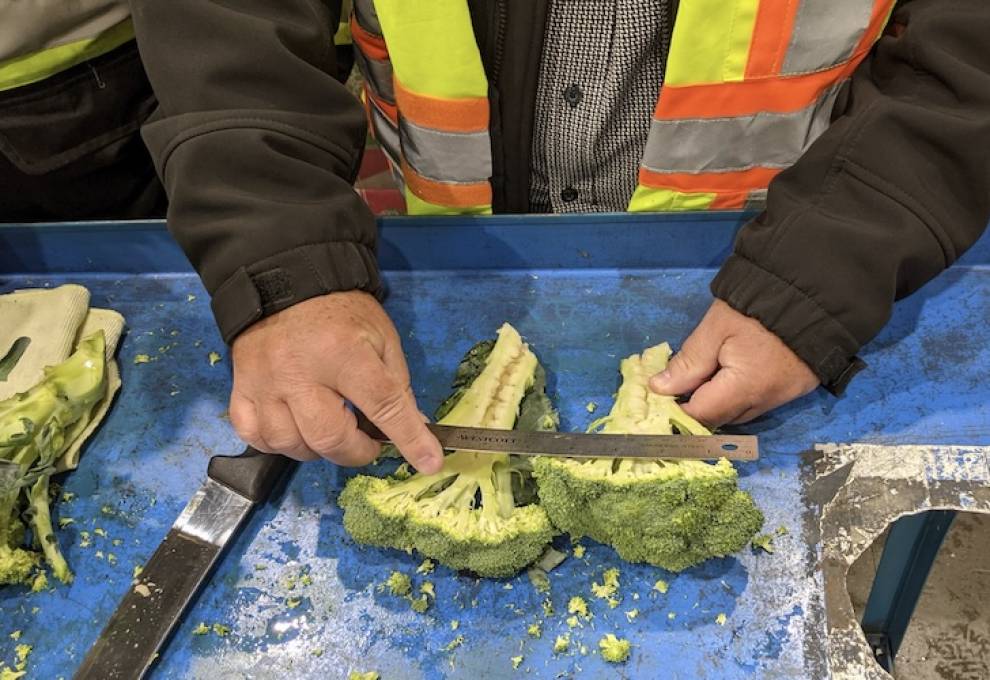
The relationship between suppliers and retailers is a complicated one. There are considerable challenges from the field, orchard or greenhouse to the point of retail sale. Retailers also have logistical challenges to source produce supplies domestically and globally, to merchandize at stores and keep consumers happy. Many factors must click for the product to get to the store, on time, at a fair price and for consumers to be satisfied with their purchases – in taste and value.
Many retailers define their expectations of the relationship in supplier agreements and other documents. Produce is especially complicated, because there can be variability in quality and/or size of products. Over time, the industry has shifted from one where relationships were more personal to one where compliance is defined and expected. Retailers have imposed fines when suppliers are not compliant. These compliance fines imposed by retailers have been a source of tension in our industry for some time.
As we move through 2025, the Canadian Grocery Code of Conduct is becoming a reality. Retailers and suppliers are beginning to join this entity as the staff is in place and they begin to become a factor in the food and beverage value chain. The Code will be officially implemented on January 1, 2026 at which time the formal dispute resolution process will be activated. Compliance fines and the arbitrary actions of retailers are certainly one reason we have a Grocery Code of Conduct in place.
Understand your customer’s expectations
Suppliers should ensure they understand how the retailer wants to interact and how they want to do business. When a retailer enters a business relationship with a supplier, they are paying for more than just the product. Retailers expect the product to be delivered on time, with the correct packaging and labelling and the agreed upon configuration for supply chain. In produce, there should also be a published product specification that both parties are aware of.
The two biggest reasons retailers have these expectations is to allow them to deliver sales and be efficient. If suppliers are not able to get products to them on time, when ordered with the agreed upon lead times, the retailer will have empty shelves. When product is not available for sale, retailers miss revenue and risk losing consumers to the competition. If product arrives without the proper pallet configuration or other issues, the retailer will incur incremental costs to get the product through the system.
Quality and size issues in produce can be complex. There are qualitative measurements and there is also some room for interpretation. If you have any doubts or grey areas, have the conversation before the season or before the product ships.
Do more than skim these expectations. Retailers will enforce them, so you need to understand them. Recently, I was having a conversation with a supplier about retailer relationships. They have established a good volume with national retailers, even though they are based a plane trip away from major retailers’ offices. I asked how they have been able to build solid relationships with all of the major retailers. It was a one-word answer: compliance. They believe if they are compliant with expectations, then they can have solid relationships. If they are not compliant, it does not matter what else they do.
If you are not clear about some of these expectations, ask questions and get answers. This can be an opportunity for you to interact with different people in a retailer’s organization. Ask to visit the warehouse and talk to receiving people about pallet configuration or quality assurance people about product specifications. These personal relationships can be invaluable.
Make sure your business understands
Once you understand all of the expectations, you should cover this within your business. Your shipping people need to know what is expected. Usually, it helps when they understand why as well. Explain that your customer receives thousands of pallets every day. When the shipping notice is on the same place on every pallet, it saves them hours of searching and makes them more efficient.
Your quality assurance people need to have the same interpretation of the specifications and standards that your customers do. This can be very detailed when it comes to some items. It is much better to have the conversation prior to the season, as opposed to the heat of the moment, when they have a trailer load of product they want to reject.
Make sure your business executes
It is great to understand the expectations and share them with your employees. It is another thing to execute every day. Track these results and share the performance with your people. Metrics such as on-time deliveries or pallets configured properly should be tracked. Make sure your people know how they are doing. Celebrate the wins!
Compliance should be part of the conversation
Retailers focus on the exceptions or the problems. When you have your season wrap-up call or are planning for the next season, let them know how you are doing. It is a great accomplishment to be compliant and you should let them know you are working hard to make this happen. You can also update them throughout your season with a few stats. You might not get a response, but they do understand this is important to you and they will appreciate knowing you are doing your part.
Good relationships with customers are developed over time. Meeting or exceeding their expectations for doing business will go a long way to developing solid relationships. Some suppliers focus on the frustration of the fines and others figure out how to do business. When you meet or exceed expectations the fines are not an issue or if they are an issue, they have a relationship to help resolve the situation.
The Grocery Code of Conduct is in place to arbitrate issues and keep the playing field more level. Let’s hope you don’t need to resort to this forum and can have good prosperous working relationships with your customers.

